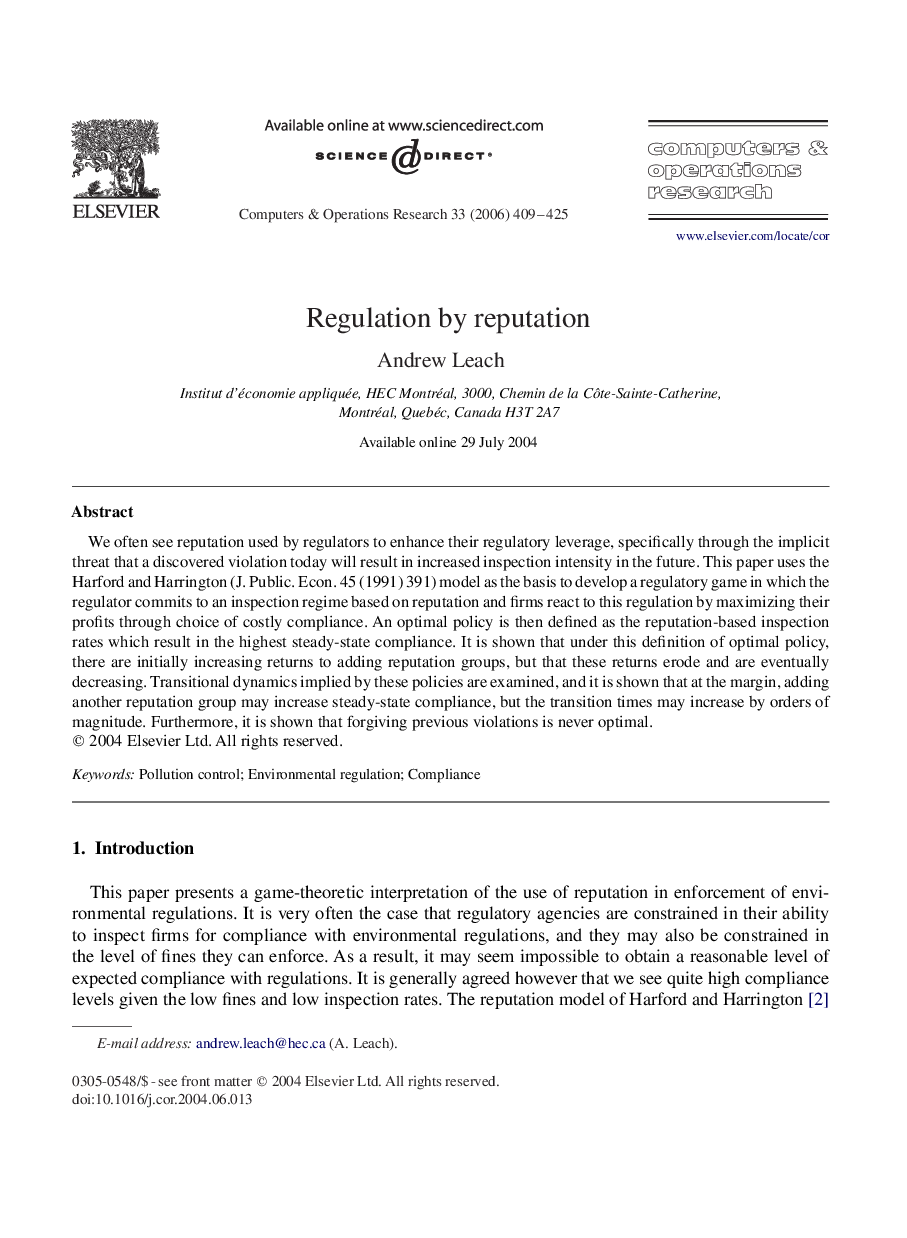| Article ID | Journal | Published Year | Pages | File Type |
|---|---|---|---|---|
| 476423 | Computers & Operations Research | 2006 | 17 Pages |
We often see reputation used by regulators to enhance their regulatory leverage, specifically through the implicit threat that a discovered violation today will result in increased inspection intensity in the future. This paper uses the Harford and Harrington (J. Public. Econ. 45 (1991) 391) model as the basis to develop a regulatory game in which the regulator commits to an inspection regime based on reputation and firms react to this regulation by maximizing their profits through choice of costly compliance. An optimal policy is then defined as the reputation-based inspection rates which result in the highest steady-state compliance. It is shown that under this definition of optimal policy, there are initially increasing returns to adding reputation groups, but that these returns erode and are eventually decreasing. Transitional dynamics implied by these policies are examined, and it is shown that at the margin, adding another reputation group may increase steady-state compliance, but the transition times may increase by orders of magnitude. Furthermore, it is shown that forgiving previous violations is never optimal.
